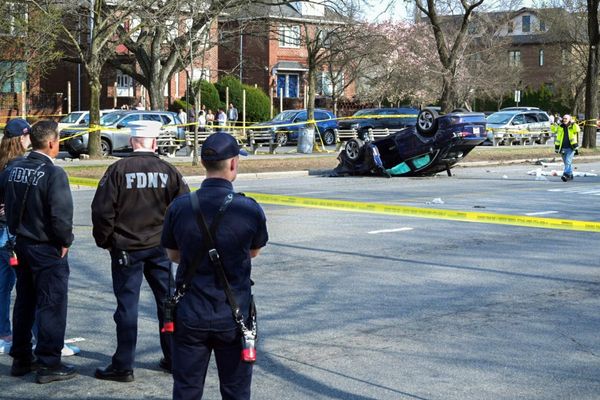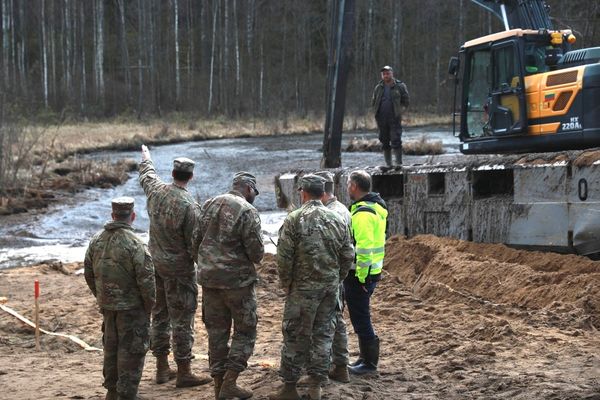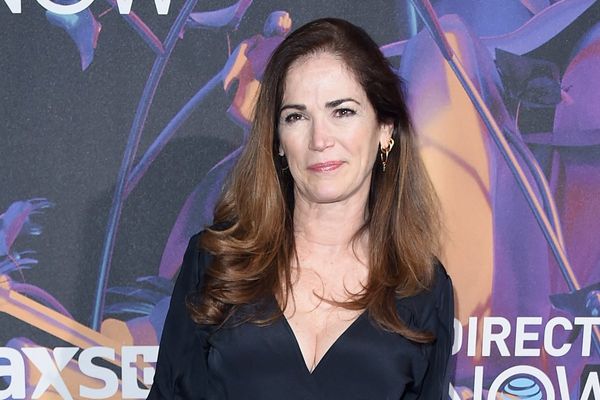
Grief has its various accessories. Over two floors of the Millennium Gloucester hotel, in west London, they come in the form of bottled water, boxes of paper tissues and a space marked as a “breakout area for BSRs”, meaning for those bereaved by the Grenfell Tower fire, as well as the fire’s survivors and the locality’s residents. The tower burned down on 14 June last year with the loss of 72 lives. The inquiry began on Monday and will last into November.
A mistake was made on Tuesday, when a video of the fire was shown without a warning and some of the bereaved left the inquiry in tears. But on Wednesday a sheet of paper – a “trigger sheet” – was left on every seat, describing scenes in videos still to be shown that might be distressing, including footage of burnt-out flats. That episode apart, the inquiry so far has been conducted with exemplary care and gentleness. Counsellors from the NHS stand by to provide comfort and advice.
On Wednesday morning – it was the eighth day of Ramadan – Bernard Richmond QC, the inquiry’s second counsel, asked us to remember that “a number of people are fasting, and … offering them a glass of water may be less helpful than it’s intended to be”.
Richmond also said in his preliminary remarks that “emotion is expected”, and that applause would be “entirely welcome” when appropriate. Then we settled down to honour the memory of the dead by hearing their friends and relatives speak generously about them, either directly from the platform where they sat around a table with their lawyers, or in videos that appeared on two screens behind the committee’s chair, Sir Martin Moore-Bick. These first days of the inquiry – they may add up to nearly a fortnight in total – are devoted to what are called commemoration hearings, and when I first heard of them I thought they sounded mawkish and unnecessary, and perhaps symptomatic of a popular need to be noticed; to be famous for Warhol’s 15 minutes. Where had stoicism and privacy gone? “If they’d decided to do this for the dead of the Somme,” a friend said, “the hearings would be going on yet.”

The reality is different. It was the second set of inquests into the Hillsborough deaths that first used commemorations – then known as pen-portraits – to put the bereaved at the centre of proceedings because, in the words of the judge who ordered the new investigations, “quite apart from the pressing entitlement of the families of the victims of the disaster to the public revelation of the facts, there is a distinct and separate imperative that the community as a whole should be satisfied that, even if belatedly, the truth should emerge”. The charity Inquest, founded “to provide expertise on contentious deaths”, pressed the government to adopt a similar approach for Grenfell. To hear the voices of survivors and the bereaved, it argued, would be “the best thing the inquiry could do to assuage [their] profound anger, anxiety and anguish” and “harness their positive contribution to the quality and credibility of the outcome”.
A conspiratorial view is possible: that the bereaved will exhaust their anger by grieving and that public outbursts of emotion simply divert attention from a colder search for the facts, to the benefit of the powers-that-be. But in this big basement chamber of the Millennium Gloucester, that kind of cynicism is hard to sustain. There is no sense that people who have come to sit on the platform are enjoying this moment; that they are “having their day in court”, as used to be said of the aggrieved who at last enjoyed the prospect of redress. Their purpose is to outline the lives and personalities of those they have lost, which can be a struggle. The sympathetic applause – that new kind of clapping – that greets the end of each statement as much honours the courage of the speaker as the merits of the dead.
So far, these testimonies have suggested opposite things. One, that people are different. Two, that they are much the same. The people who lived in Grenfell Tower represented an enormous variety of birth countries, languages, diets and customs. They weren’t rich; many endured personal difficulties. And yet, on the evidence, of the hearings they managed to live harmoniously. In the words of Michael Mansfield QC, counsel to a group of the victims, “London should have been proud of this community”.

Was it a triumph over difference? Or were they (and are we) so very different? Looking at my notes from Wednesday’s sessions I can see sentences that obviously belong to certain individuals and communities and others that could come from any or all. “My family is from Aswan, a small city in south of Egypt … a quiet and nice city with the Nile running through it … the city is safe and the people are kind-hearted.” That passage must come from Sayeda Ibrahim (whose daughter Aiasha spoke her words) in her tribute to her sister Rania and her two young children, Fethia and Hania, who lived at flat 203. There can also be no doubt about this passage: “It was a special dad-and-son time for us … We had a totter’s cart made for me with my name on it, and that Easter he entered me into the horse parade at Regent’s Park. I can’t begin to tell you how happy I was … it was a fantastic and memorable day.” That was Lee Disson remembering his father, Tony Disson (flat 165), who was a west Londoner born and bred.
But who said these other things? “We were all very close, like one big family.” “She made friends with everyone.” “I love you, Dad … rest in eternal peace.” “We do not know when we are going to die … we never thought we would think of her as a memory.” “He used to feed us first and then feed himself.” “He did not want his kids to want for nothing.” “She always had a smile on her face.” “He loved animals.” From wherever the dead came – Afghanistan, Egypt, Sierra Leone, Shepherd’s Bush – they left behind remarkably similar stocks of love and remembered virtues.
At least 1,500 people died when the Titanic went down in 1912. In their rich mixture of nationalities, ethnicities and languages – Lebanese, Armenians, Finns, Chinese – the steerage passengers can be seen as a precedent for the Grenfell tenants. Many of them were escaping political or religious persecution and oppression. All hoped to find a better life in a new world.
More than three-quarters of these steerage passengers drowned – a far higher proportion than those travelling on the upper decks, in first – but not a single survivor from steerage was called to give evidence at the subsequent Board of Trade inquiry. In his 1986 account of the disaster, Michael Davie wrote: “Like the poor of the land, drowned steerage passengers have no history. Common humanity has little interest in knowing what happened to other common people like themselves; shocked by the sudden intervention of chance and chaos in human affairs, they draw reassurance from the knowledge that even the privileged can come to an untimely end.”
The Titanic inquiry concluded that there was no truth in the suggestions that steerage passengers had been unfairly treated. Their high losses could be accounted for “by their greater reluctance to leave the ship [and] their unwillingness to part with their baggage”. To read this is to understand how the commemorative process can play a vital part at inquiries into disasters and calamities. When the victims are given characters, families and careers, the truth becomes harder to avoid.• Ian Jack is a Guardian columnist







